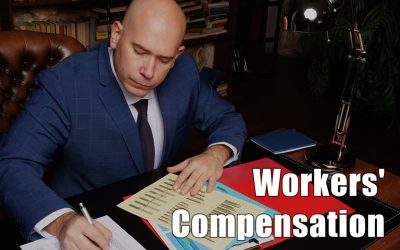Insurance terminology and processes may be intriguing to people outside the industry, but as providers of medical record review services for attorneys and the insurance sector we strive to stay informed regarding these. Among the various terms, “subrogation” in connection with workers’ comp insurance is one that has to be clearly understood. Most auto, commercial, liability, property, and workers’ compensation policies contain a clause that addresses subrogation. To explain in simple terms, if Party A accidentally injures Party B, and the latter is compensated for the injury by Party C, C has the right to seek recovery for the amount of its payment to Party B by suing Party A. Though subrogation clauses may slightly vary from one type of policy to another, they all have the same general intention.
- If a workers’ comp injury is caused by a negligent third party other than the employer, the injured worker has the right to sue that third party for damages in a civil action.
- The employer or insurance carrier also has subrogation interest, i.e., the right to recover the money they spent due to the actions of a negligent third party. The insurer will file a lien on the proceeds of any third party recovery.
- Most states have rules prohibiting workers from receiving duplicate recovery for the same injury or “double dipping.” Typically, the worker is required to reimburse the insurer for the number of workers’ comp benefits he/she received from the insurer. The worker can retain any remaining damages, once the insurer has been fully reimbursed.
What are the types of claims that could be caused by a third party?
- Motor vehicle accident caused by the negligence of a third party
- Slip and fall claims, when the employee is injured on property owned by a third party
- Accidents resulting from defective equipment or machinery owned by a third party
In any work accident, it is important to initiate an early and thorough investigation into the accident. This will not only help strengthen any defenses to the claim, but also determine if there is a subrogation opportunity due to a legally responsible third party.
An employer or insurer seeking to pursue reimbursement from a third party for benefits it paid related to the workers’ comp claim is entitled to the entire proceeds of a third party action. However, there are exceptions to the reimbursement rights. The employer must also consider fees and expenses it may have to pay as a pro rata share of the costs associated with pursuing the third party claim.
- Though portions of the third-party recovery not directly related to the employee’s work injuries as for instance, legal malpractice awards and interest, and loss of consortium are not recoverable, if an employer has made workers’ comp payments, the reimbursement requirement may exist irrespective of the amount the employee actually receives.
- The reimbursable costs to the employer include past benefits paid and future benefits that have not been made in a lumpsum settlement. These include PTD (Permanent Total Disability), PPD (Permanent Partial Disability), medical bills, TTD (Temporary Total Disability), and death benefits or wage differential.
- Non-reimbursable amounts include expert/IME fees, third party vendor costs, costs in connection with using a nurse manager, and attorney’s fees – though these may be a significant portion of costs incurred with defense of the workers’ comp claim.
Subrogation in connection with workers’ compensation insurance is complex. All states in the US, except Ohio allow workers’ compensation subrogation. The laws of each state vary a great deal and are applied differently. The basic parameters of workers’ comp claims are constant in all states, but the laws regarding subrogation and their application vary considerably from state to state. It is important therefore that subrogation professionals understand the subrogation rights they have. This will help them make an informed decision as regards how to fully and adequately protect their subrogation interest. Workers’ compensation subrogation laws become more confusing when other subrogation issues such as no-fault laws, tort reform, lien reduction statutes, and varying statutes of limitations are to be considered. Subrogation programs need to educate its staff regarding the laws of the various states within its jurisdiction, as well as the subrogation laws in other states in which any of its insured people do business or travel.




